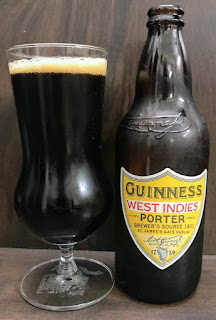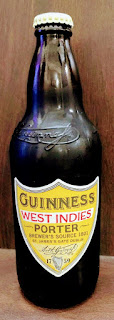History:
Guinness is an Irish dry stout which originated in the brewery of Arthur Guinness (1725 – 1803). The Company was started in 1759 at St. James’s Gate Brewery in the capital city of Dublin, Ireland. It is brewed in almost 50 Countries and is available in over 150 with almost 9 million glasses of Guinness enjoyed every day around the world. In spite of its declining consumption from 2001 onwards, it is still the best-selling alcoholic drink in Ireland where Guinness & Co. brews almost €2 billion worth of the beverage annually.
Arthur Guinness started brewing ales in 1759. On 31st December 1759, he signed a 9,000 year lease at £45 per annum for the unused brewery. Throughout the bulk of its history, Guinness produced only three variations of a single beer type i.e. Porter or Single Stout, Double or Extra Stout and Foreign Stout for export. By 1914 Guinness was producing 2,652,000 barrels of beer a year, which was more than double of its nearest competitors and was supplying more than 10% of the total UK beer market. In the 1930’s, Guinness became the seventh largest company in the World.
In 1959 Guinness changed its whole composition by introducing Nitrogen (N2) instead of Carbon di-Oxide (CO2) in its brewing method. The introduction of N2 changed the fundamental texture and flavour of Guinness. N2 bubbles are much smaller than CO2, thus giving a “creamier” and “smoother” consistency. This was arguably the pivotal moment in its 258 year history. The mastermind behind this discovery was Michael Ash – a mathematician turned brewer. After an extensive four year journey of experimentation, he discovered the mechanism to make this possible. As a result of this when a pint of Guinness is poured today, you will see a classic “surge and settle” effect which is ultimately the extensive work and genius of Michael Ash.
The Company merged with Grand Metropolitan in 1997 to form Diageo Plc . Despite the merger with Diageo Plc, Guinness has retained its right to the Guinness brand and associated trademarks and thus continue to trade under the traditional Guinness name.
On 4th September 2014, Guinness announced the release of two new beer brands i.e. Guinness Dublin Porter and Guinness West Indies Porter. Both were inspired by authentic recipes whose origins lie in the historic Guinness brewers’ diaries from the late 1700s and early 1800s.
Guinness West Indies Porter is based on an entry in the diary of 1801. It was purposely brewed to maintain its freshness on long sea voyages to the Caribbean and beyond….
To guarantee the best quality upon arrival, Guinness brewers made these Porters with more hops and a high gravity. With their distinctive tastes, these two new Porters will offer beer lovers something different and a fresh take on what’s been enjoyed for centuries.
Some more Interesting facts about Guinness:
1. Their famous dry stout is of a very dark ruby colour instead of black and this is due to the roasting of malted barley, a process which the brewery compared to making coffee.
2. Arthur Guinness had 21 children and was affectionately nicked named “Uncle Arthur”. You can ask for a pint of Uncle Arthur and the bartenders to this day will serve you a Guinness.
3. The Guinness Harp wasn’t introduced to the logo until 1862. It is a symbol of Ireland.
4. There are studies claiming that the antioxidants present in Guinness are beneficial to the heart. Guinness has fewer calories than skim milk or any other non-alcoholic drink.
5. More than 13 millions pints of Guinness are consumed at St. Patrick’s Day alone.
6. Double Pour : Unlike other taps, Guinness is dispensed through a five hole disk restrictor plate. It supplies an uncommon amount of nitrogen which makes the head extra-effervescent. As such, two shifts are needed i.e. first to start the magic and second to finish the job. The perfect pint is said to take 119.5 seconds to pour. But who’s counting?
Some key insights provided by one of my local Irish friend – Michael Collins:
6. There was a very famous man known as Paddy Losty, who frequented a bar in Dublin, known to drink 30 pints or more in one sitting at Hynes Bar, Stoneybatter, ably supported with a breakfast fry by his wife Maureen. This can only achieved by the less gassy stout.
About the Beer:
I always wanted to experience a Guinness straight from St James’s Gates and finally got one. I popped the cap and with great excitement really let it fly this time in a beautiful Tulip glass. Guinness features a burnt flavour that is derived from malted barley and roasted unmalted barley. Medium – Full body, the aroma is an interesting balance of earthy, sweet and creamy texture. Well carbonated with fine, scrubbing nitrogen bubbles cascading down the side of the glass. The taste was quite rich, very chocolaty, roasted coffee with the tang of refined Sugar. Finish was semi-sweet with the tanginess of the fermented barley giving it a robustness that I do not often perceive in this style. Dries just a bit into the finish and leaves a lingering roasty/burnt coffee flavour. Thoroughly enjoyable, bold in flavour, substantial in body, but still pretty easily drinkable.
When you’ve got a pint of Guinness in your hand, you really cant help but feel like you are an Irish. I really wish Guinness would make its exclusive beers more available in the International market along with their Foreign Export Stout.
Note: Special Thanks to Soma Gupta for getting me this long awaited Beer from St James’s Gates, Dublin, Ireland.


